In this guide, you'll learn, how many batteries, What size charge controller, what size inverter & what size cable you'll need for a 400-watt solar panel kit.
Also how much power will a 400W solar panel produce & what can a 400W solar panel run?
In short, For a 400W solar panel kit, you'll need a 40A charge controller (MPPT is recommended), 150Ah lithium or 300Ah lead-acid batteries
The size of the inverter and cable will depend on your usage which I'm gonna share with you in detail.
First of all, now let's calculate how many watt-hours you can expect from your 400W solar panel per day
How much power does a 400-watt solar panel produce?
On average you can expect 1600-2600 Wh or 260-320 watts out per hour from your 400W solar panel. The difference will depend on the weather conditions & solar panel tilt angle. Under ideal conditions, you can expect 400 watts of power per hour from your solar panel but it will rarely happen
These numbers are the average output power that you can expect, some hours you may receive 400 watts of power (like at noontime) and in some hours you may receive 200 watts of power (like in the evening time)
The power output from your solar panel will highly depend on the weather conditions, your geographical location, and how many hours of peak sunlight you receive.
I have covered this topic on power output from 400W solar panels in detail & also how many hours of sunlight your state receives or any geographic location in the world you are from.
Must Read: How much power does a 400-watt solar panel produce?
How Many Batteries Do I Need For a 400-watt Solar System?
Now you have an idea of how much power your solar panels can produce so now you'll need a battery bank or portable solar power station so you can store that power for later use
Use this formula to calculate the battery capacity for your solar panel
Battery Bank Size (Ah) = (Solar panel total watt-hours (Wh)/solar panel voltage) x 2 (for lead-acid battery type)
Now let's put the values which we have calculated before
1600Wh/12V = 133 Ah
So you'll need a 150Ah lithium battery or 300Ah lead-acid battery to store 1600 watts of power
Why do you need the double-capacity lead-acid battery? Well, there are different types of batteries with different discharge limits.
here's a table of battery types and their DOD (depth of discharge) limit
| Battery Type | DOD limit | Life cycles | Cost |
|---|---|---|---|
| Lithium-ion (lifepo4) | 80-100% | 2000-1600 | $$$ |
| Lead-acid | 50% | 500 | $$ |
| AGM | 50% | 500 | $$ |
| Gel | 50% | 500 | $$ |
Lithium or lifepo4 is the only type of battery that you can discharge by 100% but on the other hand, lead-acid or AGM batteries do have a discharge limit of 50% (It can be 10% less or more depending on the manufacturer)
Life cycle: when the battery is fully charged and discharged at its DOD limit is called a battery cycle and a life cycle is after these number of cycles your battery will lose its 20% of capacity
As you can see that the lithium batteries can be discharged by 100% and will last 1600 cycles before losing their 20% capacity
Battery C-ratings
Battery C-rating is the measurement of the current in which a battery is charged and discharged. Every battery type has a different discharge rate
Lead-acid, AGM, & GEL batteries usually have C-ratings of 0.2C, But lithium or Lifeop4 batteries can be discharged at a rate of 1C (1C= 1 hour)
| C-Rating | Time |
|---|---|
| 1C | 1 Hour |
| 2C | 30 Minutes |
| 5C | 12 Minutes |
| 0.5C or C/2 | 2 Hours |
| 0.2C or C/5 | 5 Hours |
| 0.1C or C/10 | 10 Hours |
| 0.05C or C/20 | 20 Hours |
This means if you have a 100Ah lithium battery you can discharge it in one hour without or in simple words you can draw 100 amp-hours in an hour.
But on the other hand, if you have the same size lead-acid battery and it is designed to be discharged in 5 hours it means you can only draw 20 amps per hour from your 100Ah lead-acid battery
Discharging your battery at a higher rate will decrease the lifespan of your battery in the long term because of the increase in battery cells which will cause a power loss due to high temperature in battery cells
with 300Ah lead-acid battery you can draw 60 amps per hour. So if you're using a 12V battery system I would be equal to 60*12 = 720 watts
So if your desired output load is equal to 700-800 watts then you can go for a lead-acid battery if it's high it's better to spend some money on the lithium battery bank.
yes, lithium batteries are expensive but definitely worth the price in the long term.
if you're on a budget I'll suggest you go for a lead-acid battery type.

200Ah AGM Battery Check Price

170Ah Lithium-ion Battery Check Price
Must Read: Maximum charging current and voltage for 12v battery
What size charge controller for 400-watt solar panel?
The job of a charge controller is to adjust the voltage output from the solar panels according to the battery voltage.
Depending on the sunlight intensity the voltage of your solar panel's output will change accordingly.
e.g at the standard sunlight conditions you can expect 18-20 voltage output from your 12v solar panel system so the charge controller will lower the voltage to match the voltage of your battery.
use this formula to calculate the size of the charge controller according to your solar panel size

Dividing the solar panels' capacity (watts) by battery voltage will give the number of Amps that a charge controller will have to handle. And the extra 25% is added for safety reasons
For example, if you're going with a 12v system. (12v 400W solar panels, 12v battery)
400/12 = 33, 33 + 25% (or 33*1.25) = 41 Amps
you'll need a 40A charge controller with 400W solar panels to charge your 12v battery.
MPPT vs PWM charge controller
While adjusting the voltage output from the solar panels the PWM charge controller will only lower the voltage coming from the solar panels but will not increase the current (Amps) which as result will cause a wattage loss. on the other hand, MPPT charge controller will lower the voltage but will increase the current which makes it 20% more efficient
Yes, the MPPT charge controller will be more expensive but it is worth the investment if you think of it as a bigger picture.
Amps*volts = Watts
if your solar panels are producing 400 watts under ideal sunlight conditions then the voltage output will be 18 volts
400/18 = 22 Amps
Let's say if you have a PWM charge controller it will lower the voltage to 14v (if the battery is fully empty) but the Amps will stay the same
14*22 = 308 watts
Here you'll have about 90-100 watts of power loss
But with an MPPT charge controller, it will lower the voltage to 14V but will increase the amps to 28Amps (400/14 = 28A)
PWM charge controller can be used for small capacity solar panels but for above 100W solar panels an MPPT charge controller is recommended.

40A MPPT Charge Controller
Check Price
What size inverter for 400-watt solar panel
Your output load & battery C-ratings will play a major role in selecting the right size inverter.
Output load will be the total AC load that you desire to run with your solar panels. For example TV (50W), laptop (100W), & LED bulbs (30W) so the total output load will be 50+100+30 = 180 watts
And I have discussed the battery C-ratings in the battery guide session. So, your battery type and its C-ratings will determine the limit of how much power you can draw from your battery bank at a time (without causing any harm to your system)
A rule of thumb will be to add an extra 20% to the maximum wattage you can draw from your battery bank (according to C-rate) to measure the size of the inverter
if your goal is only to run appliances that are under 500 watts but speaking from experience I would suggest you go for a higher wattage inverter you can get (with respect to battery C-rating)
First of all, there will not a much price difference and second of all, a 400-watt solar kit is considered to be a basic kit you can't run much of a load on it. also, you might be a beginner in the solar world.
Believe me, it's an addiction, after some point you'll desire to increase the size of your solar system so you'll not have to purchase a new inverter because you'll already have a large one then you need or your system can support.
Video - Pure Sine Wave Vs Modified Sine wave inverter
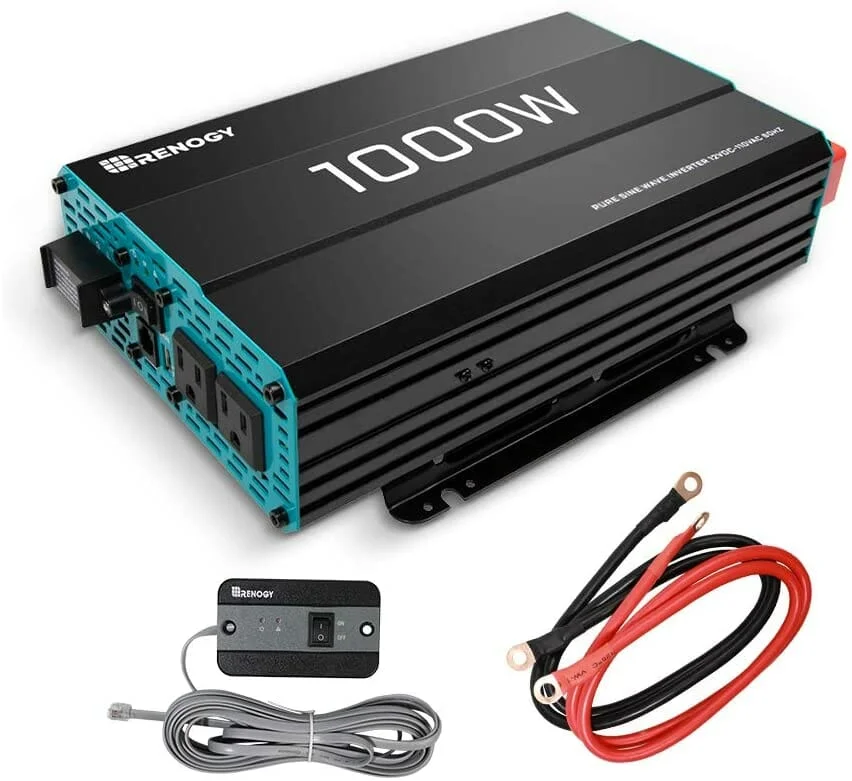
1000 Watt Inverter Check Price
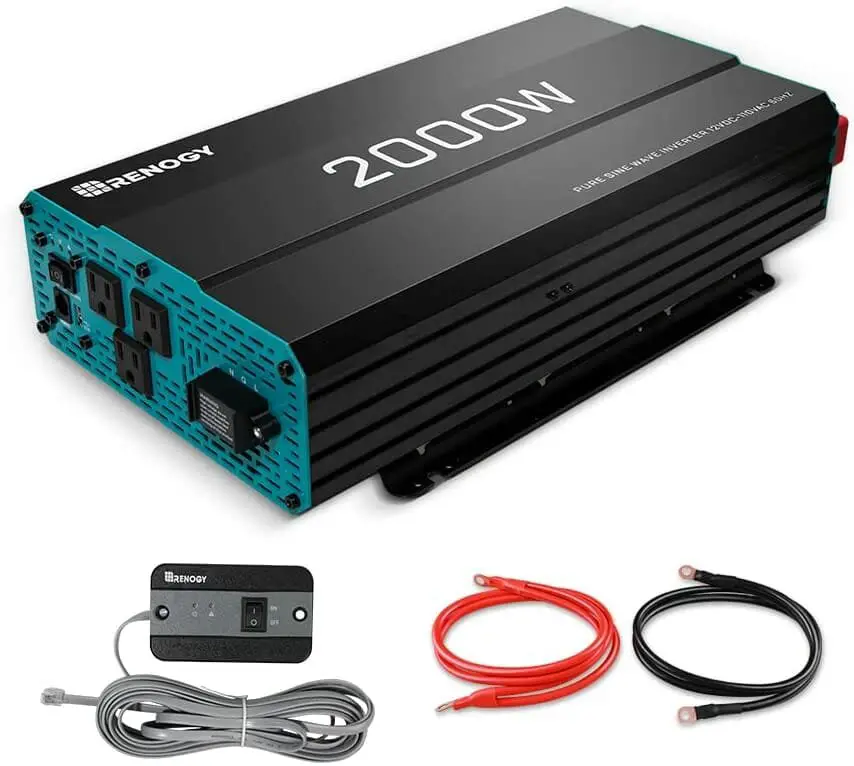
2000 Watt inverter Check Price
What Gauge Wire For 400-watt Solar Panel?
Wire size from solar panel to charge controller and then from the charge controller to battery bank will be the same. But from the battery bank to the inverter the size of the wire (AWG) will depend on the size of the inverter.
The size of the wire will depend on the amount of current (either you receive from the solar panels or draining from the battery bank)
Chart - What size wire should I use for my solar panel
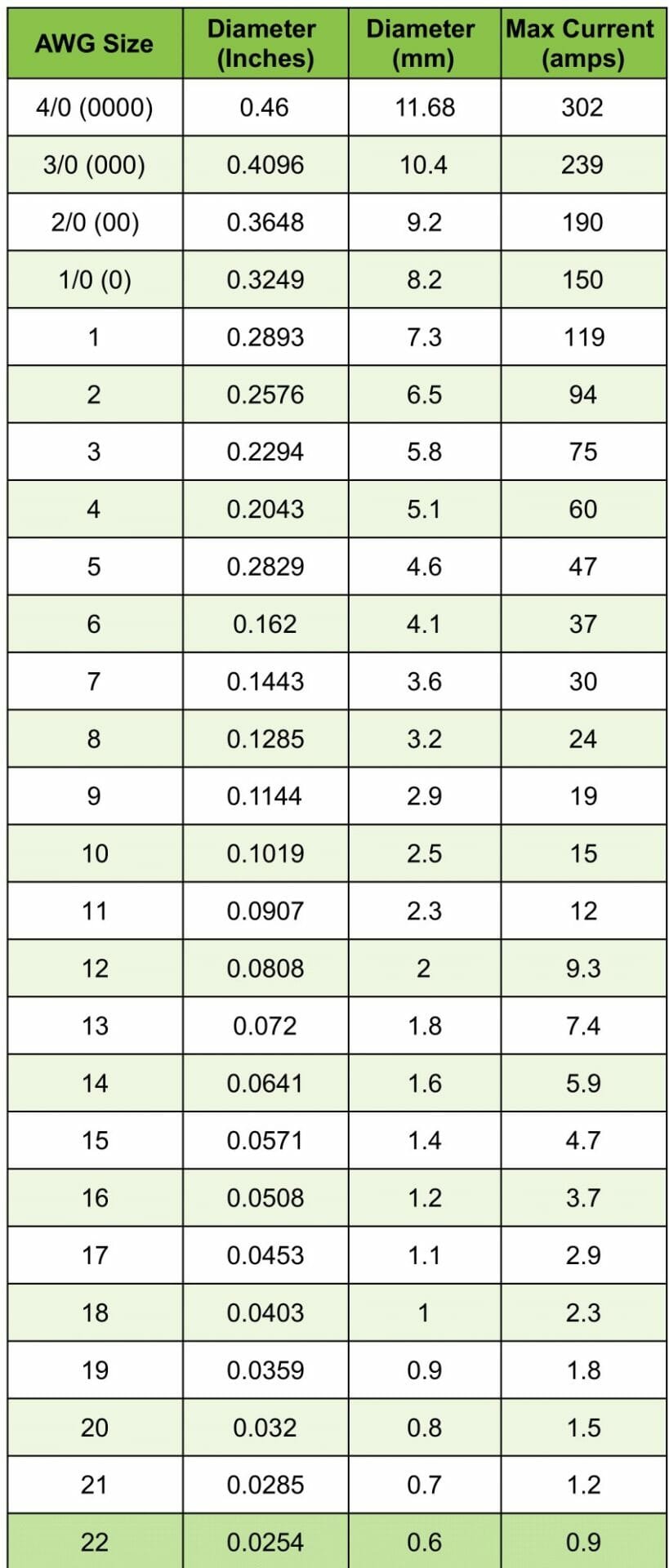
Chart - What size of cable should I use with my inverter?

Calculate the amount of current produced by the solar panels and then how much current you'll pull from the battery with the help of an inverter
The maximum watts you'll get from your solar panels will be 400 watts
Amps (Current) = watts/voltage
400/12 = 33.3 Amps
For a 12v 400W solar system, you'll need a 6 AWG size wire to connect the solar panels with the charge controller and from the charge controller to the battery
And with the help of "chart 2" select the size of the cable to power your inverter from the battery bank
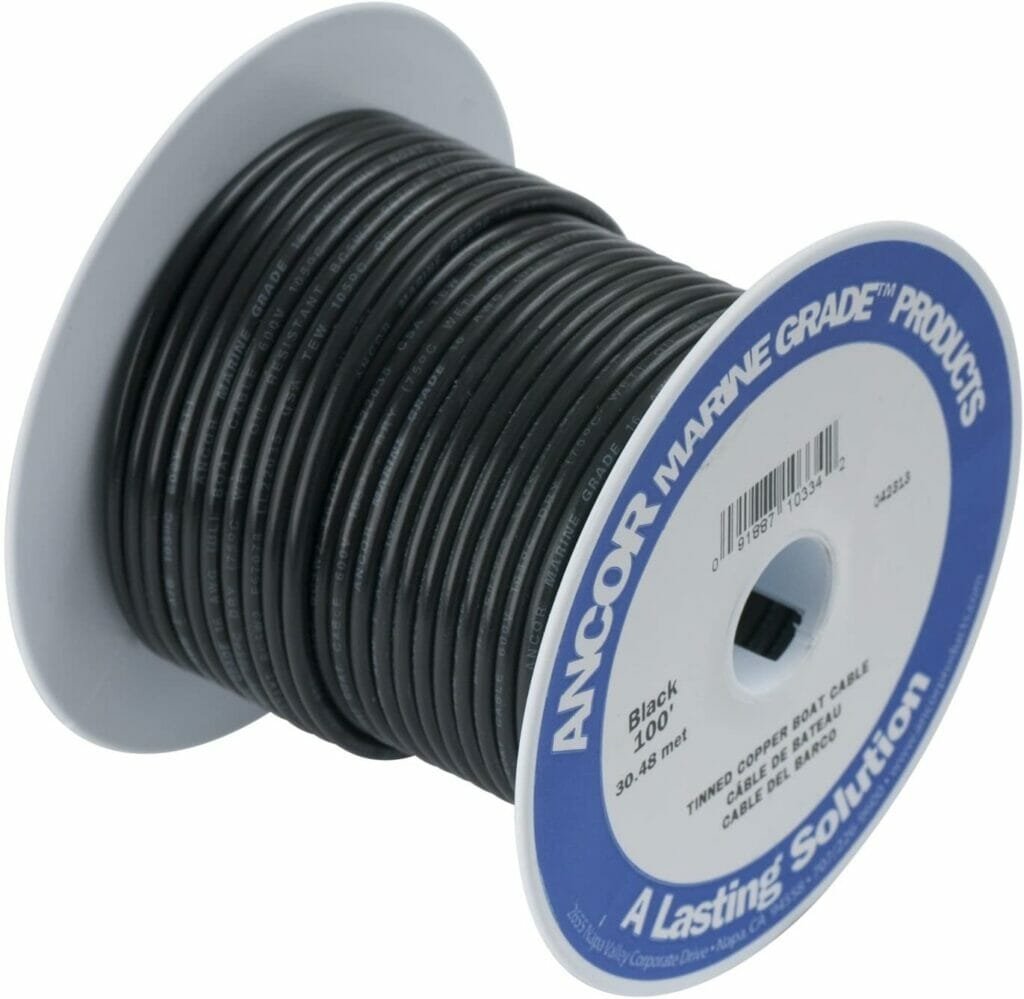
4 AWG solar Cable Check Price

Tinned Copper Lugs Check Price
Tinned copper lugs will be used as a connecter from the charge controller to the battery and from the battery bank to the charge controller.
400-watt solar panel kit fitting parts for RV
Solar Panel Mounting Brackets
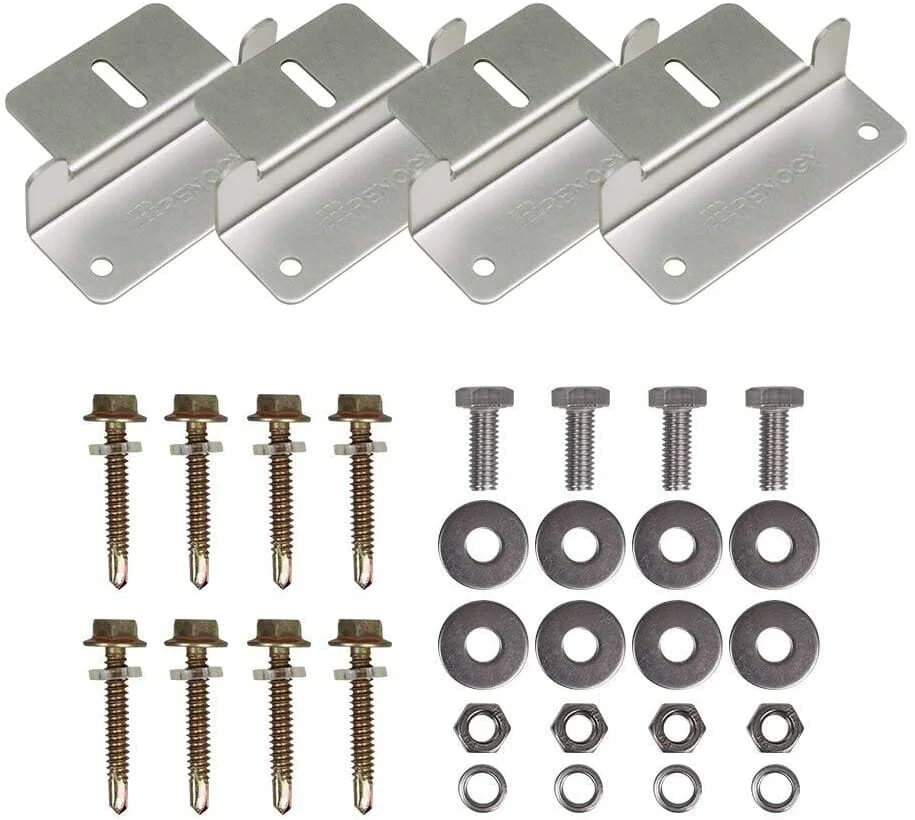
These will allow you to fix the solar panel on your RV roof without drilling holes.
Solar Cable Entry Gland
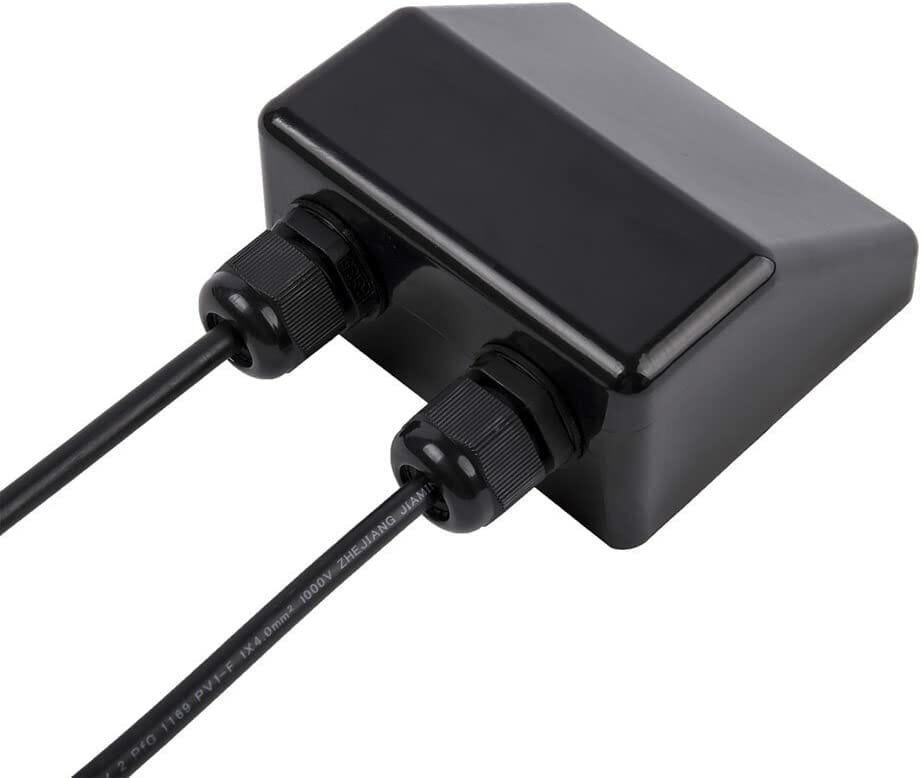
To pass the cable from solar panels into your RV you'll have to drill a hole, so this cable entry gland is a must-have.
Heat Shrink Tubing

Use this heat shrink tubing to mark the negative and positive sides of the wire.
Video - Installing solar panel kit on RV rooftop
Need a simple solution? (Portable power station is the Answer!)
If you're thinking about getting a 400-watt solar panel kit then I would highly suggest you to go for portable solar panels instead of rooftop solar panels for your RV or on-the-go power.
I'm using a portable solar power system which includes two 200 Renogy portable solar panels and a Jackery Explorer 1000 portable power station
- Read my review on my 200w portable solar panel
- Read my full review about jackery 1000 portable power station
it's a plug-and-play solar system. Mount your solar panel towards the sun, connect the solar panels with a power station and that's it.
The power station will have a built-in battery, charge controller, & inverter.
For 400-watt solar panels, I would recommend Jackery Explorer 1500 portable power station
Video - How I installed solar panels on my shed
400-watt solar panel kit
If you're confused about what to buy and what not to buy then go for a complete 400W solar panel kit
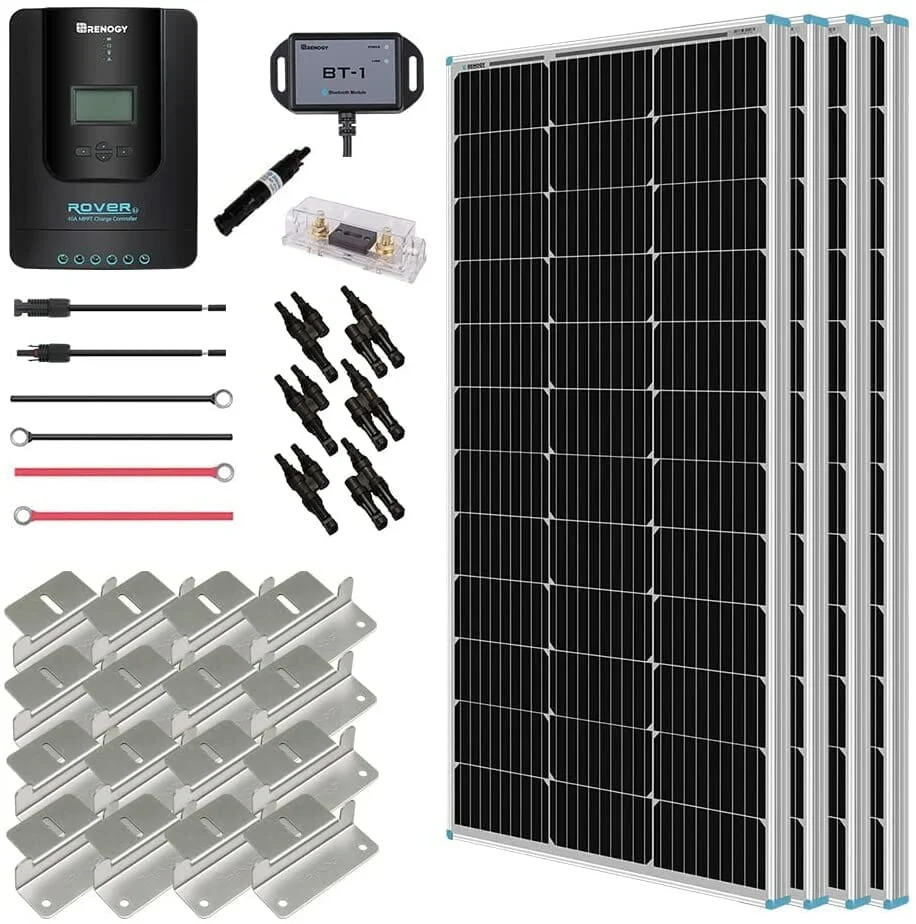
- 12V 4 x 100W solar panels
- 40A MPPT charge controller
- Cables + connectors
- mounting brackets
- Fuse
Solar panel kit setup (beginner guide)
I hope this short guide was helpful to you. still, have any confusion? LEAVE A COMMENT or contact us. Thank You!


